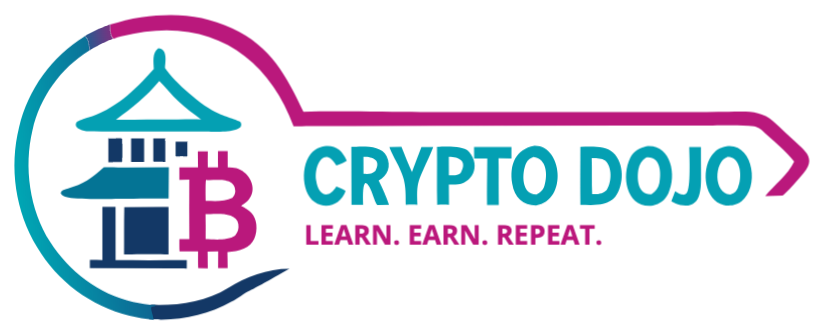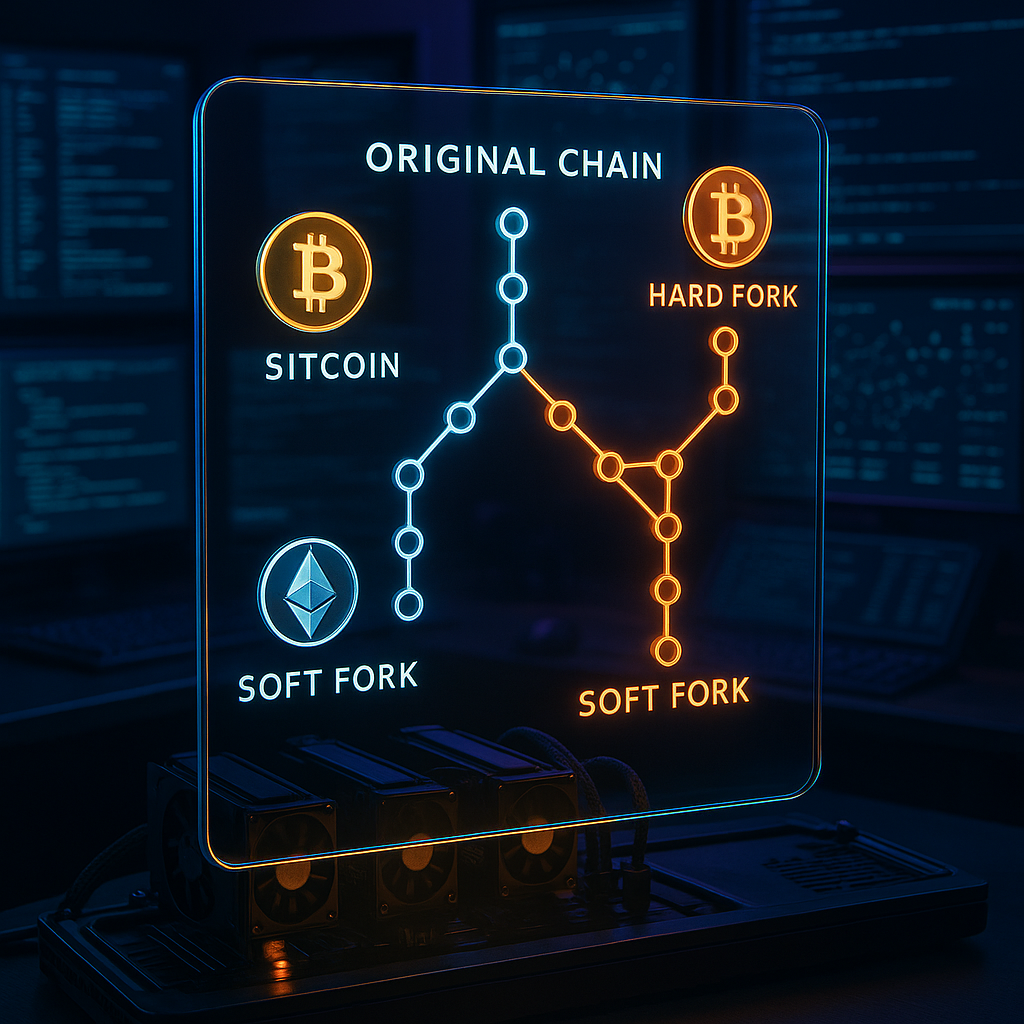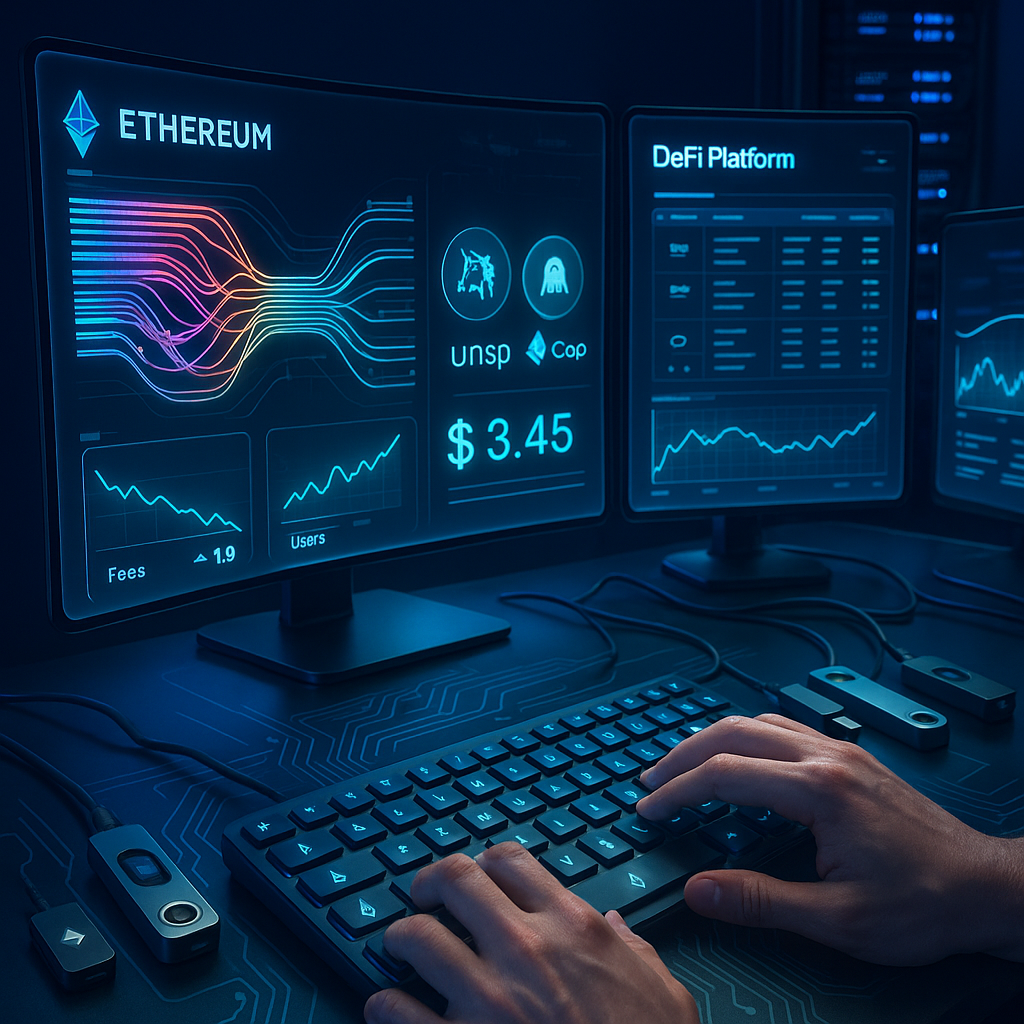Key Takeaways
Decentralized Finance (DeFi) is revolutionizing the way we interact with money by eliminating traditional banks and middlemen. Whether you are just starting your crypto journey or looking to understand the broader world of open finance, these key takeaways will set a strong foundation to navigate DeFi with clarity and confidence.
- Finance without intermediaries: DeFi platforms replace banks and brokers with peer-to-peer digital protocols, allowing you to move, lend, or trade assets directly on blockchain networks using open-source code.
- Smart contracts drive automation and trust: DeFi transactions rely on self-executing smart contracts, removing the need for manual oversight and ensuring that rules are enforced exactly as written.
- Accessible financial services for all: Platforms like Uniswap, Aave, and Compound provide lending, borrowing, swapping, and yield generation, making opportunities once exclusive to banks and brokers available to anyone with internet access.
- Shifting trust from institutions to code: Adopting DeFi means building confidence in decentralized systems governed by transparent code and community consensus. Understanding this mindset shift is just as crucial as understanding the technical mechanics.
- Real-world applications for everyday users: DeFi offers practical use cases, such as earning interest on crypto, borrowing against digital assets, and decentralized trading, often with fewer barriers and greater adaptability than traditional finance.
- Unique risks require proactive safety habits: While DeFi centers on user empowerment, it introduces risks including smart contract vulnerabilities, platform security breaches, and market volatility. Building sound security practices is key for all newcomers.
- Open participation on a global scale: With only a crypto wallet and internet connection, anyone can explore DeFi opportunities, making finance more open, inclusive, and accessible than ever before.
If you are ready to step into decentralized finance, let’s explore the core concepts, beginner pathways, and actionable strategies for confidently navigating the DeFi ecosystem.
Introduction
Imagine accessing a complete suite of financial tools (saving, lending, borrowing, or trading assets) without signing paperwork at a bank or relying on a middleman’s approval. This is the transformative vision at the heart of decentralized finance (DeFi). With an internet connection and a crypto wallet, you can unlock a world of financial autonomy.
Understanding DeFi is not just about using new technology; it’s a fundamental change in how you approach trust, privacy, and opportunity in the modern economy. With transparent smart contracts automating every transaction and powerful platforms lowering barriers, even beginners have the power to access flexible, modern financial services.
Stay Sharp. Stay Ahead.
Join our Telegram Group for exclusive content, real insights,
engage with us and other members and get access to
insider updates, early news and top insights.
 Join the Group
Join the Group
In this guide, we will break down the building blocks of DeFi, highlight practical examples across industries, and establish security habits every newcomer should embrace for a confident, empowered first step into decentralized finance.
Understanding DeFi’s Core Concept
Decentralized Finance (DeFi) signals a major shift from conventional financial systems. Instead of depending on banks, brokers, or payment processors, DeFi leverages blockchain technology and smart contracts to create a permissionless, open-access financial system. Smart contracts are self-executing agreements coded directly on a blockchain, carrying out transactions when predetermined conditions are met and eliminating the role of intermediaries.
Visualize DeFi as a modular system, where each protocol acts like a Lego block representing a specific financial function (lending, borrowing, trading, insurance, or asset management). These programmable blocks can be combined in limitless ways, encouraging financial innovation and customization without the friction of traditional bureaucracy.
Comparing Traditional Finance and DeFi
To fully appreciate DeFi’s impact, it helps to examine the core differences from the traditional financial model:
- Accessibility and Inclusion: Where banks require identity verification, credit checks, and paperwork, DeFi platforms are open to anyone with a crypto wallet and internet access.
- Transparency: Every transaction and rule governing a protocol is recorded on a public blockchain, fostering unprecedented transparency compared to the opaque nature of most banks.
- Automation: Smart contracts automate processes such as loan approvals, collateral management, and trade execution. This increases efficiency and reduces the risk of human error.
- Interoperability: DeFi protocols can seamlessly interact with each other. Imagine taking a loan on one platform, swapping assets on another, and investing the proceeds elsewhere, all in a single workflow.
Beyond personal finance, these principles are influencing industries like insurance (with decentralized claim settlements), supply chain management (with automated escrow services), and even public sector projects (such as programmable municipal bonds in government finance).
Key Components of the DeFi Ecosystem
A comprehensive DeFi ecosystem offers diverse tools and applications to suit different needs and levels of experience. Here are some foundational pillars:
Decentralized Exchanges (DEXs)
DEXs, such as Uniswap, SushiSwap, and PancakeSwap, empower users to trade cryptocurrencies directly with each other instead of through centralized exchanges. They use Automated Market Makers (AMMs), which set prices via smart contracts built on supply and demand in liquidity pools. This system minimizes slippage, enhances market efficiency, and ensures trades can happen any time, across the globe.
Beyond crypto trading, DEX technology is expanding into sectors like commodities (tokenizing gold or oil for peer-to-peer swapping), real estate (enabling property shares to be traded securely), and even intellectual property marketplaces.
Lending and Borrowing Platforms
Platforms like Aave, Compound, and MakerDAO allow anyone to lend crypto assets and earn interest or use digital assets as collateral to borrow funds. Smart contracts ensure secure and automatic loan management, with variable interest rates set by protocol supply and demand.
Such open lending platforms have applications beyond just crypto. They are guiding innovations in microfinance (providing uncollateralized loans in developing markets), small business lending, and even student finance.
Yield Farming and Liquidity Mining
Yield farming and liquidity mining invite users to provide capital to DeFi protocols in exchange for rewards, usually transaction fees and new tokens. By contributing to liquidity pools, users become crucial market participants and can earn passive income.
Similar incentive structures are gaining traction in industries like digital content creation, where creators are rewarded with tokens for contributing content, and environmental science (where tokens incentivize carbon credit trading or clean energy production).
Decentralized Stablecoins
Stablecoins like DAI and USDC form the backbone of many DeFi activities, offering price stability essential for lending, payments, and risk management. They serve as on-ramps and off-ramps between crypto and fiat currency, broadening DeFi’s real-world usability in global trade and cross-border remittance.
Getting Started with DeFi
For newcomers eager to participate, a few essential setups and best practices can ensure a safe and smooth onboarding.
Essential Tools and Prerequisites
- Web3 Wallet: Digital wallets such as MetaMask, Ledger, or Trust Wallet serve as your personal bank in the DeFi world, controlling access and transactions.
- Base Currency: Most DeFi protocols use ETH or stablecoins like USDC as primary currencies, so holding a small balance is necessary.
- Understanding Gas Fees: Every operation on a blockchain network incurs a transaction fee. Learning to manage and estimate these fees helps minimize costs.
- Security Software: Using hardware wallets and multi-factor authentication significantly improves the safety of your digital assets.
Beyond crypto, consider experimenting with blockchain-powered crowdfunding platforms or decentralized insurance dApps, both of which are open to beginners.
First Steps in DeFi
Begin with a slow, methodical approach that prioritizes learning and security.
Stay Sharp. Stay Ahead.
Join our Telegram Group for exclusive content, real insights,
engage with us and other members and get access to
insider updates, early news and top insights.
 Join the Group
Join the Group
- Start with small experiments. Use modest sums to learn the mechanics of a DeFi protocol.
- Try simple, established applications. For example, lend stablecoins on a reputable platform or make a small swap on a DEX.
- Gradually explore more complex opportunities. Move from lending to providing liquidity or participating in governance.
- Always research each platform. Read reviews, consult community resources, and verify security audits before committing more funds.
Education-focused DeFi applications and simulation tools are also emerging. These let you practice without risking real assets, similar to trading simulators in traditional finance or educational platforms in other technical fields.
Managing Risks in DeFi
As with every financial innovation, DeFi comes with both opportunities and risks. Building awareness and adopting robust security habits are essential.
Common Risk Factors
- Smart Contract Risk: Bugs or vulnerabilities in protocol code may result in significant financial losses if exploited.
- Impermanent Loss: Providing liquidity can result in temporary losses when asset prices fluctuate; understanding this phenomenon before investing is vital.
- Market Risk: High volatility in crypto values can impact DeFi portfolio value and loan positions.
- Protocol Risk: Problems such as governance failures, oracle malfunctions, or community disputes can destabilize a platform.
- Regulatory Uncertainty: Global regulatory approaches to DeFi are evolving, and legal changes may affect some protocols.
These risks are not unique to crypto. In healthcare, for example, automated data sharing platforms must guard against system bugs and data breaches, while in finance, risk modeling is crucial for portfolio management.
Security Best Practices
- Store your digital assets in hardware wallets, preferably offline, to protect against hacks.
- Double-check all contract addresses and website domains to avoid phishing and scams.
- Prioritize platforms that undergo regular, public security audits.
- Diversify. Avoid concentrating too much capital in a single protocol or asset type.
- Stay updated on platform developments by monitoring official channels and independent reviews.
Security education applies across sectors. In e-commerce, retailers must guard against payment fraud, and in education, institutions protect sensitive student data. Building sound security habits is a universal requirement for digital innovation.
Advanced DeFi Concepts
As your understanding grows, so does access to more advanced capabilities and strategies.
Flash Loans
Flash loans, offered by platforms like dYdX and Aave, enable users to borrow large sums of assets without upfront collateral, provided they are repaid in the same blockchain transaction. While this tool is often used for trading or arbitrage, it requires advanced technical knowledge and carries significant risk. Beyond finance, similar instant-loan protocols are inspiring applications in supply chain management (rapid inventory procurement) and gig economy payment systems.
Governance Tokens
Protocols such as Compound and Uniswap distribute governance tokens to users, enabling them to propose, discuss, and vote on key changes. This model promotes decentralized, community-led management, turning every user into an active participant. In other sectors, such as environmental science, governance tokens could be used to steer community-driven sustainability projects or carbon offset platforms.
Cross-Chain DeFi
DeFi is expanding beyond Ethereum onto blockchains like Polygon, Solana, and Avalanche, increasing scalability and reducing costs. Cross-chain bridges connect these networks, though they require careful evaluation for security and compatibility. In a broader context, cross-chain principles are shaping interoperability in healthcare records management and global logistics.
The Future of DeFi
As DeFi evolves, it continues to reshape financial services, technology, and global participation.
Emerging Trends
- Layer 2 Solutions: Scaling tools like Optimism and Arbitrum reduce transaction fees and congestion, mirroring performance enhancements in gaming and social media platforms.
- Real-World Asset Integration: Efforts to tokenize real estate, stocks, art, and even intellectual property unlock new markets for investment and collateralization.
- Institutional Adoption: Traditional banks and asset managers are increasingly exploring DeFi protocols, driving hybrid models that blend institutional expertise with open-source innovation.
- Regulatory Frameworks: Governments are developing new policies for DeFi, focused on anti-money laundering, consumer protection, and systemic risk oversight.
- Education and User Experience Improvements: New tools and resources are making DeFi interfaces more intuitive, drawing lessons from fintech, e-commerce, and educational app design.
Other industries are also watching DeFi’s playbook for inspiration on how to build openness, transparency, and user control into their digital services.
Conclusion
DeFi is not merely a technological trend. It is a paradigm shift that places financial power and autonomy directly in the hands of individuals worldwide. With foundational platforms such as decentralized exchanges, open lending protocols, and yield-generating mechanisms, even novices can participate meaningfully in a transparent and user-driven ecosystem. Yet, with new opportunities come new responsibilities. Staying informed, developing solid risk management skills, and embracing continuous learning are all essential for empowered participation.
Looking ahead, DeFi is poised to expand further, integrating more real-world assets, scaling across multiple blockchains, and attracting a wider range of participants, from retail investors to global institutions. Its underlying concepts are already influencing sectors like healthcare, education, and sustainability, pointing the way to a more inclusive and responsive digital economy.
The next wave of progress will favor those who move beyond passive adoption, actively seeking to understand, innovate, and safeguard their place in the decentralized landscape. In the DeFi dojo, learning, earning, and repeating is not just a motto. It’s the key to leading in the financial systems of tomorrow. Equip yourself with knowledge and take your first step with confidence. The future of finance (and perhaps much more) is open to all who are ready to engage.





Leave a Reply